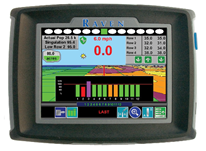Sports of all kinds offer a ready analogy to consider when preparing your team and your customers for a great season of precision agriculture. Pardon the cliché, but having a solid game plan matters. Machines, systems and people all offer opportunities for “spring tune-up” and often it’s the little things, when overlooked, that will stop you cold.
Bill Cosby did a routine years ago about his career as a football player at Temple University. He tells the story of how the coach fired them up at halftime with a raucous back-and-forth dialog, “Are you ready to go out there and kill ‘em?” answered by a “Yes, let’s go get ‘em!!” The frenzy accelerates to a fever pitch and the players jump up to rush from the locker room to the field.
Then he delivers the punch line: “And the door was locked.”
Precision agriculture, with its sophisticated software and electronics, offers many moments when the door can SEEM to be locked. Even small glitches can be amplified when growers are eager and the stress is high. Anticipating possible pinch points offers the virtual equivalent of WD-40 for a sticky deadbolt.
Andy Hill is president of Independent Support Services, Inc. (ISS) located in northeast Indiana. ISS is a business with two components, a precision technology testing service and a “Tier One” phone support service for precision systems. Each of these activities give Hill and his team a wide open view of how precision technology interfaces with farmers and retailers in the field. He offers the following short list of priorities for prep and troubleshooting.
Check equipment early. Get your equipment—auto steer, application controller, planters—out and do a pre-season dry run to make sure everything is working.
“Systems may not have been working when they put the machinery away last season,” said Hill. “And of course it’s when they pull it out again for spring that they remember, ‘oh, yeah, that’s right, I remember that failed late last year and we just put it away anyway.’” Hill suggests setting aside two hours for a dry run on each unit to make sure it’s doing what it should.
Update your software. If your system is not working and you need help from support staff, among the first questions they are going to ask is, “Have you updated?”
“If it’s working, I understand that you may want to leave well enough alone,” said Hill, but added that it may be a short-sighted choice. “Updating software has to become more routine.”
Hill says the industry is now further along, meaning that the numbers of different systems and versions have multiplied.
“All of us are moving forward and we have good people, but they may not remember every version being used out there.” When you have the latest version, you are likely to have the best experience. Examine and replace cables. Even in a brand new install, cables can be the culprit. Take a close look at cables to see if anything is loose or shorting out, or if you simply have a bad cable or rodent damage. “Mice do like to chew cables,” Hill said.
Of course, all of this preparation and troubleshooting involves real people with varying personalities, so maintaining a positive attitude will always improve the outcome.
Hill ended by saying, “If you are a precision ag guy working with growers faced with challenges of this kind, the first thing is be professional. You need to exhibit in the field what you would want people to exhibit to you. Be a person who really wants to help the customer solve the problem. Treat them as you would want to be treated.”
By K. Elliott Nowels

Leave a Reply